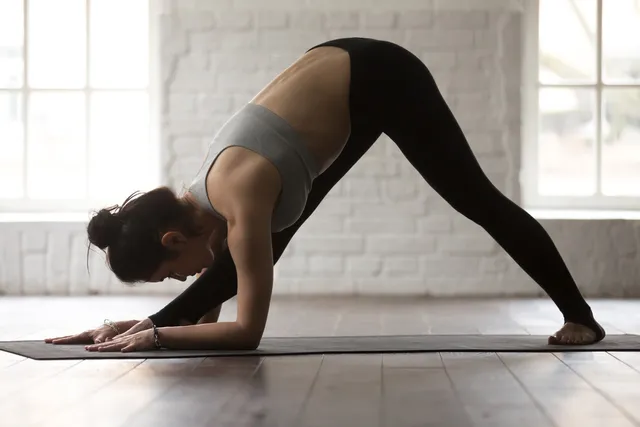
RELEASE WITH THE WATER ELEMENT
Water is the liquid matter which represents fluidity and also softness, letting go and cleaning. Having too much water leads us to congestion and retention. Water, which represents up to 70% of our weight, is essential for our survival. This element controls all the fluids in our body and dominates the pelvis and lower abdomen. In nature, this element is streams, rivers, rain, lakes and in food it is juicy fruits. A person whose dominant is water is luscious, in fluidity and letting go.
In the first part of the sequence we practice the Chandra Namaskar moon greetings which are rather slow greetings characterized by many opening movements, mainly of the pelvis, all in fluidity and softness. Unlike Sun Salutations which require energy and strength, Moon Salutations are ideal for releasing the tensions of the day and recharging one's batteries and can prepare the body for sleep. The greetings to the moon are a series of movements always carried out in the same order whose objective is to pay homage to the moon and promote development. The moon symbolizing appeasement, regenerates our energy and sends us back to our yin side which is calm (and not yang, the action). These greetings focus only on flexibility and the search for balance and develop our intuition and feminine energy. They work the opening of the hips, the shoulders and mobilizes the whole body in a gentle way. The movements accompanied by deep inspirations and expirations harmonize the breathing.
The second part of the sequence is yin. Yin yoga is a practice for slowing down, “yin” literally means the shady side of the mountain. It is the feminine polarity and represents among other things what is measurable, deep, down as well as stillness and winter. Yin yoga is a practice where we hold the postures for several minutes without doing anything which allows us to cultivate step by step deep relaxation. The 4 golden rules are to relax the muscles, to feel a sensation but no pain, to stay still and to hold for a long time. You have to relax the muscles to reach the deep tissues in order to be able to solicit the joints to develop letting go. You have to feel a sensation but no pain by letting yourself go in the posture gradually thanks to the relaxation , without putting an intention, without forcing. Stillness allows us to put the mind down and experience stillness and clairvoyance. Nowadays, non-doing is very difficult because we are constantly solicited by signals that ask us to act, so we must give ourselves the time to do nothing. Slowing down our pace and not making dynamic movements helps strengthen the tissues without damaging them, which is why we stay in certain strong postures for a long time in order to infuse them well. A mantra to remember: “To go faster, take your time!”
The hip opening postures help to work the flexibility of the lower back and to approach neutrality in the arch of the lower back. They strengthen and relax the muscles, ligaments and joints of the hips and not only ensure their stability but also generate good health of the knees, the sacroiliac region and the lower spine. On the mental point, these postures tickle the second chakra named Svadhistana which is linked to emotions, desire and creativity. It is therefore normal that emotions are felt because in case of stress we tense our hip flexors but we forget to release them. The opening of the hips therefore serves to mobilize this frozen energy and to release it as an emotional detoxification.
Access the annotated class sequence with posture images and join the community of teachers!